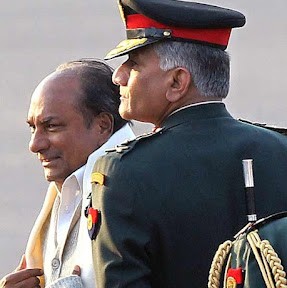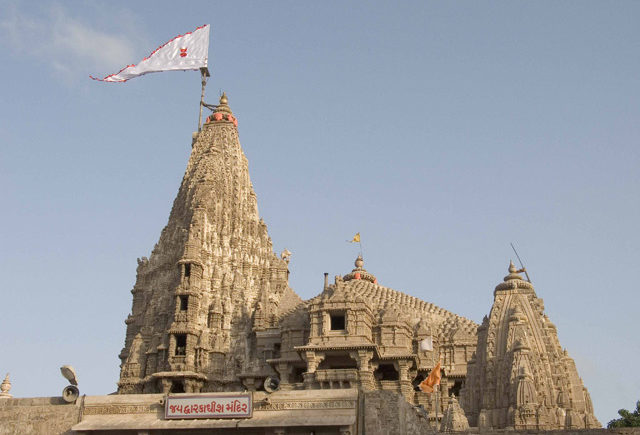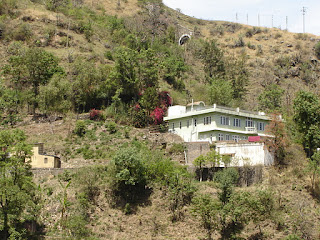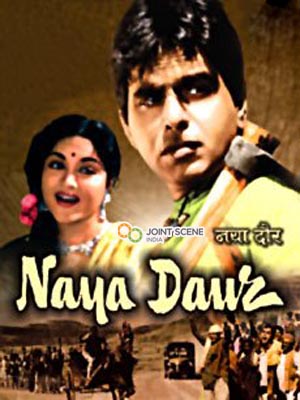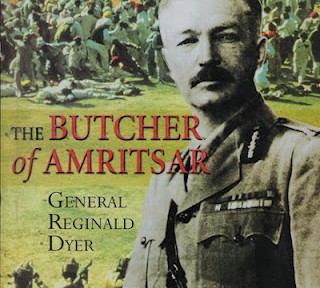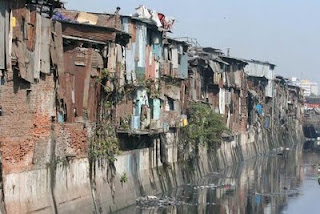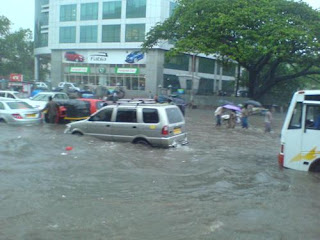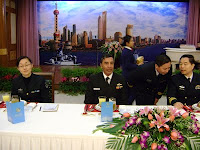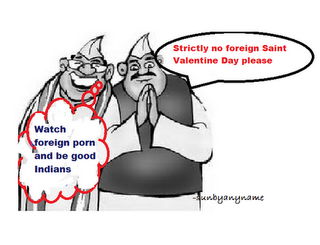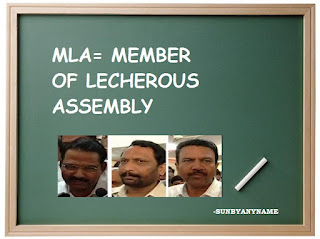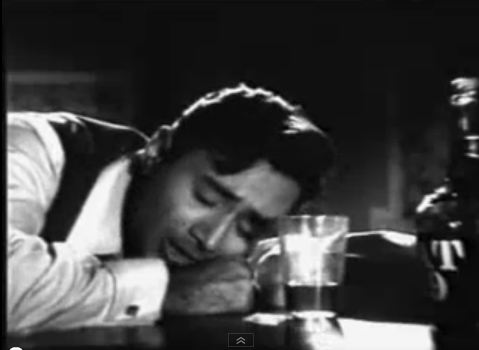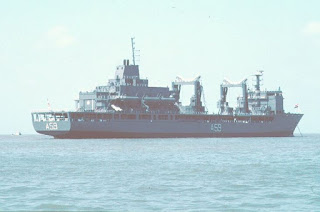Photo Essay about my Hometown Kandaghat in Shimla Hills:Kandaghat in Shimla Hills is paradise for me. If you start from Chandigarh, after Kalka (Haryana), you enter Himachal or Shimla Hills at Parwanoo. My home station – Kandaghat – is 55 kms from Parwanoo and 14 kms from Solan. I was born in my
Nanaji’s (maternal grandfather’s) house at Village Urapur, District Jalandhar, Punjab. I was just twenty days old when I was brought to Kandaghat (where my dad was posted) by my parents. The reason was that my mother’s younger sister (my
mausi) also delivered a baby boy two weeks after my birthday and Nanaji felt that it would bring the evil eye (
nazar) if the sisters continued being together with their babies. This is the house where I was brought to (my father was a horticulturist) and in-charge of this orchard. Presently, it is the office of an Agriculture Research Station of the Himachal Government.
Our present house is visible from this Research Station. My parents built it in 1976. The house and the land around it was named ‘Whispering Winds’ by us because of being in the Ghats with perpetual winds in the area, which tended to tell tales of far lands.
Whispering Winds is also visible as soon as you enter Kandaghat valley. The other house prominent to the right of it is Kissan Bhavan (Farmers Hostel) for the Agricultural Research Station.
Ours is a rare house with a drive-in road; a luxury in the hils. National Highway 22 leading from Ambala to Khab (near Indo-China border) and Shipkila and Namgial runs just above our house. The Kilometre Stone depicting Kandaghat 2 is very close to our house. The small gauge railway line between Kalka and Shimla (a World Heritage Railway Line) runs above. It has 103 tunnels in all. One of the tunnels is visible just above our house.
My father chose the pistachio colour for the house to jell with the surroundings. However, unlike houses in the hills he preferred not to have a sloping roof with slates. The view from the roof top is exquisite and we love to sit there and have sing-song sessions especially on moonlit nights.
Another view of the house from the orchard where I spent my early childhood. During those days all kinds of stone fruits: plums, apricots, peaches, and pahari almonds used to grow there besides persimmons. Even in Whispering Winds, until a few years ago, such stone fruits grew and the fruit season was in May-June every year, coinciding with my annual leave.
Now there is some habitation around. But, for a number of years, it was a lone house in the wilderness; my dad preferring to stay away from the milling crowds.
Even now, with all the traffic on the NH 22 (and it is maddening these days), it can still get very quiet at nights…and you can connect with mother nature at any time.
A typical day in Whispering Winds starts with the enchanting twilight reaching out from the hill across our house.
As it lights up the sky, one can see the silhouettes of the trees taking shape.
Finally, it is bright. But, rarely does the sun scorch; it is, on the other hand, inviting and welcome. One could, until just a few years ago go for a walk even after the sun rose. Nowadays, you can’t go for a walk anytime during the day and the night; not because of the sun, but because of the chaotic traffic on the highway that mirrors traffic anywhere in India.
The town of Kandaghat is visible from the next turn on the hill from our house.
Kandaghat is a small sleepy town and the first thing that you see is the Railway Station in the tall Eucalyptus trees.
When I took the picture below in 2007, an Air Force Naval Housing Board (AFNHB) colony had just been sanctioned on the hill where you can see some HP Housing Board houses. Why a Naval Colony in Kandaghat, so far away from the coast? Well, the verdict was that I had something to do with the selection. The truth was that I was as much surprised by the announcement as anyone else.
A closer look of the Housing Colony.
Still closer look. The AFNHB Colony finally came up to the right of it.
The Himachal government did everything to make the colony easily accessible and provided a road all the way there.
I visited the colony during its early stages and liked the site. Yipee, I was soon going to have friends from the Navy and the Air Force staying there.
A view of the Kandaghat Railway Station. It is so beautiful that when you arrive here waiting for a train you actually want the train to be late so that you can soak in the beauty. For many years after I joined the Indian Navy in 1973 my parents used to come to the station to see me off after my annual leave, rush back to our house and I would wave at them from the train as it passed for about a kilometre stretch above our house. Even now when I see trains from our house, it fills my eyes with tears remembering my dad who died of a jeep accident just 9 kms from our house, in the year 1984, when he was just 56 years old.

Here is a view of the complete Kandaghat town. The top-most building used to be the palace of the Maharaja of Patiala since Kandaghat, Solan, Chail all were areas under the reign of the Majaraja. Later they formed parts of PEPSU (Patiala and East Punjab State Union); until 1967 when the reorganisation of Himachal took place and these areas came to be part of Himachal. Even today PEPSU buses run from Punjab to Chail, a town across Shimla that the Maharaja of Patiala made after he was banned by the British from entering Shimla after the alleged elopement of a British Lady with the Maharaja during the British Raj. Indeed, even till today, the part of the Mall at Shimla from where the Lady and the Maharaja eloped is called the Scandal Point. At the time of my birth, a part of the palace was converted into Officers’ Club and my father was the honorary secretary of the club.

Here is the pic of the Scandal Point at the Mall, Shimla. The guy in the pic is not the Maharaja though; it is me in my Navy cap:
If we look a little to the right of the Maharaja’s palace in Kandaghat, we start seeing the hills sloping down until they merge with the plains of Punjab.
The pic below shows the alignment of the road, NH 22 leading up to Kandaghat where the road crosses over from left hill to right hill of the ghat.
This part of Kandaghat shows a government school for girls and boys (Himachal being No.1 state in the country for spread of primary education) and the court of SDJM (Sub Divisional Judicial Magistrate), Tehsil and Patwari offices and office and residence of SDM (Sub Divisional Magistrate). SDJM’s court has now been shifted to the Mini Secretariat of the HP Govt near the Police Station.
A polytechnic college came up in Kandaghat for the last three decades or so.
Computers and Internet came to Kandaghat in the last decade.
Alright, lets get back to Whispering Winds as seen from the Agricultural Research Station, the best located house in Kandaghat:
Lets also look at the orchard of the Research Station. The plants as seen in the pic are the Kiwi fruits.
The others are stone fruits: plums, peaches, apricots.
Picture shows my younger son Arun in the orchard.
Kandaghat town has 120 villages. We are in the village Ded (One and a half! Since it is one and a half kms from Kandaghat. Earlier, the village was called Ded Gharat since at the village was an Atta Chakki (Flour grinding machine that ran with the flowing water of the stream)
My son with the ‘Chinese’ tractor at the Research Station.
Lets trace the journey of the train (called Toy Train) as it enters Kandaghat valley from Shimla (the glimpse of which is seen to the right of the train).
It looks so alluring as it winds its way through the hill. The road below the train track is the one that is leading from Kandaghat to Chail.
The train plays hide and seek as it takes turns and goes through tunnels.
The green building in the foreground is the office of the IPH (Irrigation and Public Health department). During my childhood we stayed here for a few years. The yellow building in front has apartments for the officers of the Agricultural Research Station.
The train when it passes over bridges like this brings out loud shrieks of joy from the passengers, most of which are tourists.
After the Station, that have already described earlier, it crosses above our house and is to be seen on the hill across from the house.
I used to continue waving at my parents for about 200 metres…
…..until the train would take a turn and enter a tunnel and leave the Kandaghat valley.
Here is a view of Ghaghar river that flows all the way from Shimla to Panchkula.
That’s the East hill. The palace of the Raj Mata, mother of Maharaja of Patiala is on the hill. The palace is called Blossom and is accessible from Chail. Close to Blossom is a tourist spot.
Just across from Whispering Winds is Thada Moola. Himachal is a land of gods (Dev Bhoomi). The god of Thada Moola looks after the safety and prosperity of people in the area. Indeed, if there is a serious accident on the road, it is widely believed that Thada Moola is angry and need to be appeased. His mandir (temple) is just below the hill.
You have seen Whispering Winds from the Agri Research Station. Now, here is a view of the latter.
The tall hill to the right of the Research Station has a temple called Karol temple.
My village Ded has just five families….all the houses are visible in the picture below:
Some of the green-houses of the Research station.
The hill immediately above our house.
The road leading from Solan to Kandaghat……
……leads to Aab Shar, a place for the weary to take a break.
It even has a service station and guest rooms.
The train that I showed you earlier is just a few metres from Aab Shar.
It is now going towards Kandaghat.
The seasons change and now it is green.
Even the smoke of the train is alluring, though these are diesel fumes
Another train vanishes in the bend.
A view of the Mushroom Farm attached to our house. My father was a pioneer in cultivation of Button Mushrooms in this area. He was Project Director of the first UNDP Mushroom Project in Chambaghat about 12 kms from our house. This one he set on his own:
Look at the hills across, the Chail Hills:
Another Dhaba is about a km from our house towards Kandaghat.
A view of the Housing Colony during rains.
And the road that goes from Kandaghat to Chail
A close view of the Housing Colony:
My mother poses for me here. The town of Kandaghat is in the background.
An alluring site:
I just love to be here:
And here:
Mom poses for me at Whispering Winds. She ensures that there are flowers all through the year:
Flowers and greenery:
The river Ghaghar can be seen in the background:
Lets have a look at the flowers in Kandaghat both at Whispering Winds and in the surroundings:
The first ones are these on the rocks in front of our house. The climbers actually look like snakes. White flowers appear on these in the quiet of the night.
The curious characteristic of this rare flower is that if you make loud noise, the petals close, protecting the flower from unwanted sounds:
Mom (Read about her in ‘
Seventy-Eight Not Out‘), as I told you ensures flowers are there all seasons. This, for example, is the driveway to our house:
I can go on and on and there are still about a few dozen varieties left. Lets have a quick look at the places close to Kandaghat. The first is a place called Kiarighat on the way to Shimla. It is just 13 kms from our house. There is a Himachal Tourism Rest House there. The food is good and I particularly like the impressive moustache of our favourite waiter Chaman Lal. Have a look at the following pics:
 |
| Chaman Lal stands next to my mom at the Rest House at Kiarighat |
 |
| View from Kiarighat: My son (with his ‘Party Shirt’ with my wife). It is heavenly here. |
|
If you prefer an up class place to stay and have food, then Destination is just nine kms from our house towards Shimla.
If you go further North, about thirty kms from our house in Kandaghat is the city of Shimla. It was the Summer Capital of India during the British rule. Every time I visit Kandaghat, I decide to visit Shimla for the sight of the Ridge, the Mall, Lakkar (Wood) Bazaar, excellent restaurants and just to soak in the sight of the lovely hills surrounding Shimla. Have a peep:
Alright, lets now get back to Whispering Winds, Kandaghat. I must be really in love with the place that I keep clicking the same place time and time again:
Lets go south of Kandaghat after crossing Aab Shar:
We come across the town of Solan famous for its Brewery established by a collaboration between Kapil Mohan and Meakins and hence called Mohan Meakins. It is famous for the Golden Eagle beer, the only beer in India that I know of which is made with spring water, Solan No. 1 Whisky, and Old Monk Rum. Have a look at this quaint town:
The highest point between Chandigarh and Shimla is Barog. It is as many kms south of our place as Shimla is to the north. It affords a panoramic view of both north and south. The picture above is of an exquisitely placed hotel called Barog Heights where you really feel as if you are airborne. Below are some more pics of Barog:
Shimla Hills, as the whole of Himachal is called Dev Bhoomi (Land of the gods). This is how a day begins at our house:
We have gods virtually at every turn of the hill:
My temporary abode,therefore, can be anywhere. But in the twilight years of my life, I’d love to get back to where my heart is: Kandaghat; and more specifically Whispering Winds:
This is where I feel totally at home and will always feel; as serene as the moon that rises across from the hill and fills my heart with a strange desire to be part of the surroundings.

